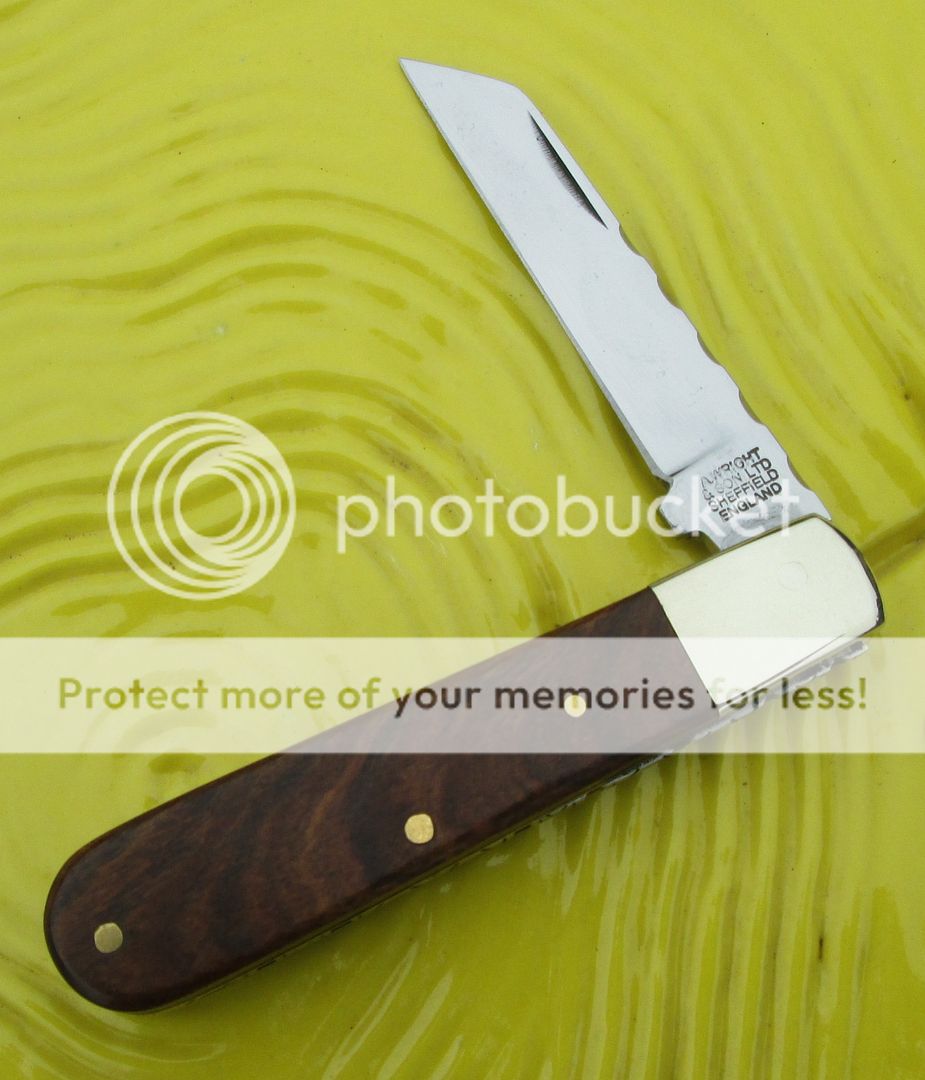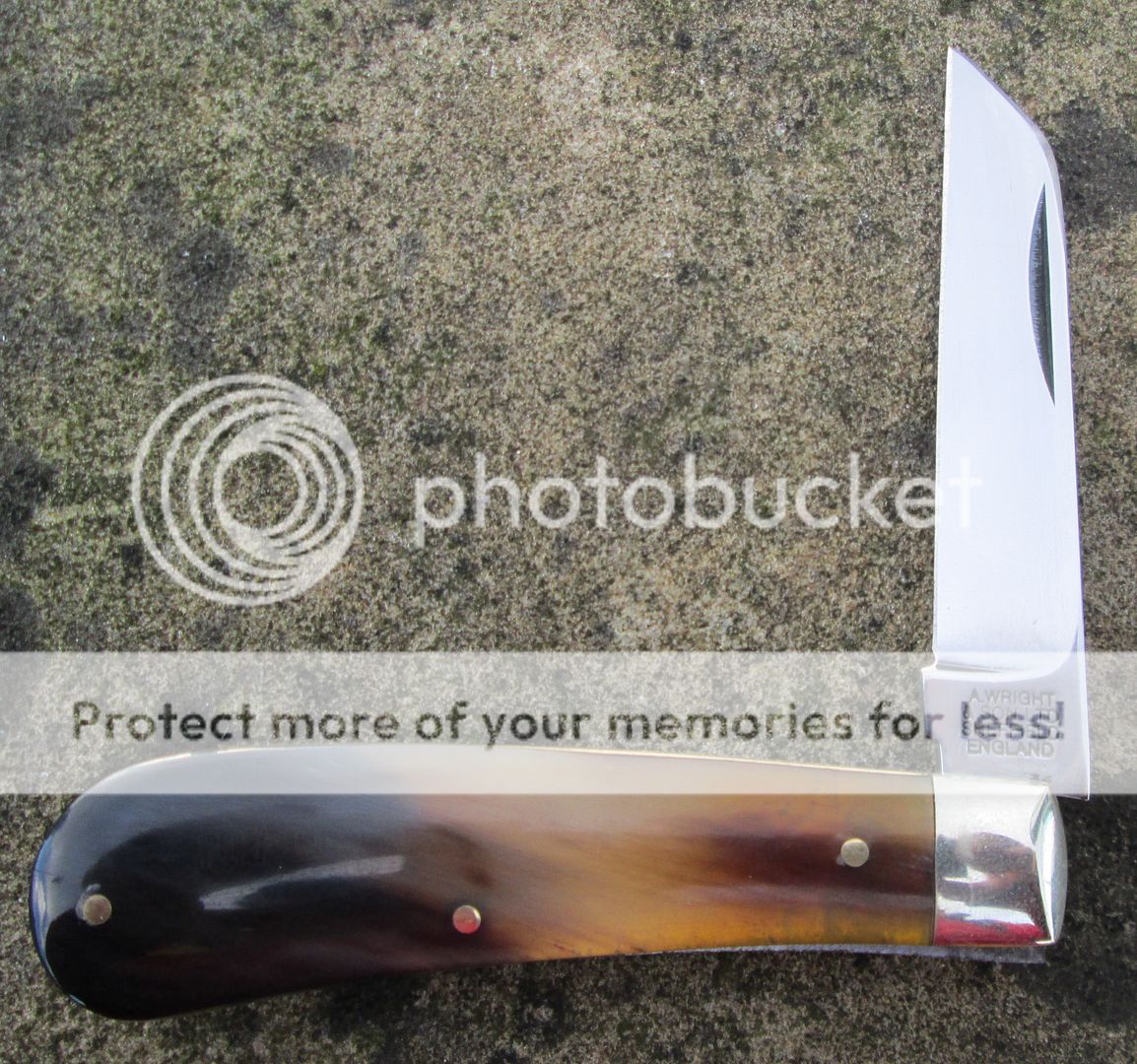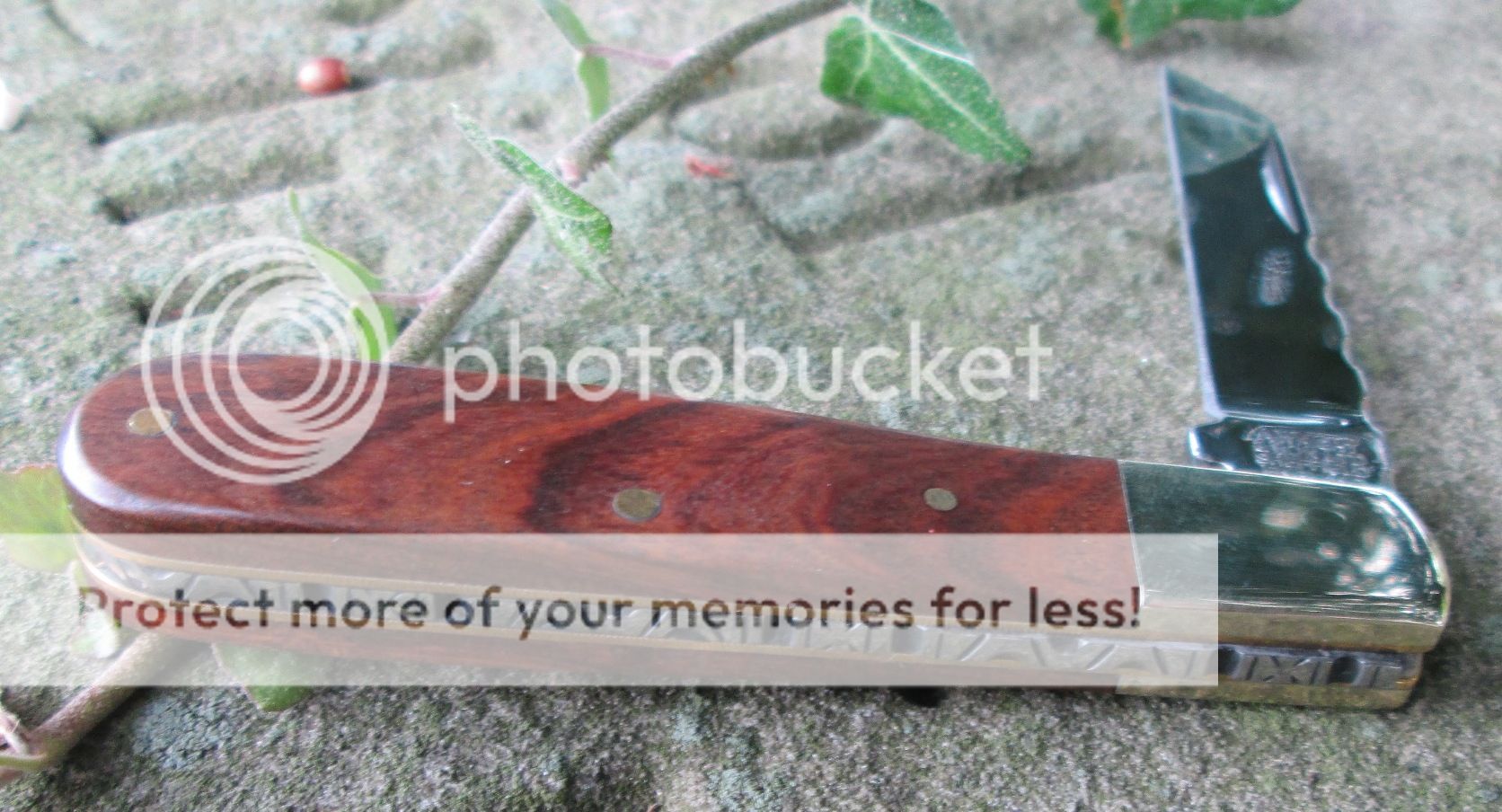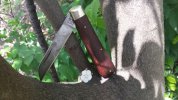So I mentioned a little while ago that I wanted to provide a bit of a write up in regards to my thoughts on the Lambsfoot knife. I have pretty much carried Rosie every day since I received her in the mail (thanks again,
@flatblackcapo) and she has pretty much done everything an EDC knife does on a regular basis (i.e. open packages, cut fruits and vegetables, some minor whittling, reamed the bowl of my pipe, and other miscellaneous cutting tasks one comes across throughout the day). After a couple of weeks or however long it has been, I feel I have acquired a decent idea of the Lambsfoot's capabilities and, if any, shortcomings.
So before I dive into my review of sorts, I should preface it with this: Rosie has changed hands a couple times so, obviously, I am not her original owner/handler. So for those who don't know Rosie or are familiar with her saga of sorts, know that I am not reviewing a knife that is brand new or fresh from the cutler in Sheffield. So with that being said, it is reasonable to expect that the finish will not be perfect due to the inherent nature of what qualifies a knife as a "user" versus a collectible.
So without further ado, shall I begin? I had hoped to get some quality photography done in one of my favorite environments, the Pacific Northwest forests, and though I did take the family out camping this last weekend, I was negligent in devoting the necessary staging and camera time to get some beautiful pictures to go with this post. So instead, you get my back deck area as a backdrop, which is probably a good thing as the knife becomes more of a focus rather than its surrounding environment.
I am certainly the furthest from a harsh knife critic and as a result, I can be easily pleased. However, it would be remiss of me not to examine aspects of a knife that others more discriminating than I might be more concerned with. So I will be discussing the following elements in this review:
- Knife pattern and country of origin
- Blade steel, grind and cutting edge
- Cover materials and construction
- Overall fit and finish
- Overall "feel"
- Functionality
- Final thoughts
So I wouldn't be posting here if Rosie was anything but a Lambsfoot or Lambfoot knife. She was made in Sheffield, England by the A. Wright & Son LTD cutlery firm. I won't get into the origins of the Lambsfoot pattern as that is a subject well covered in this thread for the most part and by those far more learned on the topic than I.
Here is a pic of the tang stamp
According to the cutlery firm, the steel used for the blade is C70 High Carbon Steel. I haven't done a ton of research on this particular steel but a brief internet search brings up that it is a low alloy carbon steel and is somewhat akin to 1095, though there seems to be some debate as to whether or not it is better or worse or simply the same. As I am not the steel snob I used to be, all that matters to me when it pertains to an everyday pocket knife is that it cuts effectively, takes an edge quickly and will hold it for a reasonable duration of time. This steel seems to fit that particular bill quite well.
When I received Rosie, she had already developed a bit of a patina, which is something I happen to like and expect all my high carbon steel blades to develop with use. Pictures of new A. Wright lambsfoot knives show a bit of polish to the blades but they do provide a satin finish as well on some of their knives and that is what Rosie came with. The blade came with a full flat grind which I find typical and desirable in my traditional cutlery and the swedge towards the tip is apparent, yet subtle. The edge bevel happens to be somewhat uneven. Now I find it unlikely that this is a result of previous sharpenings but I could be wrong. In any case, it isn't a big deal to me and I expect it will straighten out with future sharpening.
Difficult to capture edge bevel but here is my best shot with my phone's camera.
Rosie is aptly named for the cover materials she was blessed with, Rosewood. Rosewood can vary quite a bit from knife to knife and I think it largely depends on what specific trees were used as a source as several species fall under that umbrella. Regardless, the Rosewood covers that Rosie is in possession of are quite handsome, though mismatched. It is certainly possible that the covers have darkened some with prior use but that only adds to its charm, in my opinion. The mark side has a very dark example, showing no variation in color or grain, where the pile side has a bit more character with some color variations. I find both covers to be quite lovely and they suit the knife perfectly. The wood covers are pinned to brass liners with brass pins and are capped up top by nickel silver bolsters. No shield, no etch, no markings aside from the tang stamp on the blade. I think the lack of additional adornments suit the overall nature of this knife, I wouldn't change a thing.
Mark side of knife
Pile side of knife
So next I am going to discuss the overall fit and finish of this knife. Now I already mentioned that as I am not the original owner of this knife, it is possible that some of the finish issues can be attributed to previous use but there are certainly a couple of fit issues that Rosie came from the shop with. The good and the bad is listed below.
- Good : Pins are flush with the covers and can hardly be felt when running your fingers along the wood.
- Bad : There is a significant gap at the bolster on the pile side, otherwise the covers are well fitted, tight, and the transition between liner and wood feels seamless.
- Good : The bolsters are well fitted and tight with the pivot pin being virtually invisible.
- Bad : There appears to be a bit of a gap on the mark side between the blade and liner at the pivot. However, this is but a visual issue as it has not translated into any sort of blade play or wobble.
- Good : The blade seems fairly well centered though the mark side gap mentioned above does seem to create more space between the length of the blade and the liner on the mark side.
- Bad : The fit of the blade and the backspring isn't perfect though again, it seems purely visual.
- Bad : You can see some daylight between the brass liners and backspring.
- Good : The knife has beautiful "walk and talk", it has a firm, but not overly stout, pinchable pull with no halfstop and it closes with an authoritative snap.
- Good : No blade play or wobble. Despite the gaps here and there, everything is tight and quite solid.
Gap between bolster and cover
Gaps between liners and backspring
Blade centered with mark side space
Blade spine and backspring fit
Space at the pivot
To be continued below..... (Post length too long apparently)). Joseph Rodgers & Sons. Amazing jigged bone, thunderous snap with an 8-9 pull, just the way I like them! Double Rattail Bolsters, and a traditionally shaped blade and stovepipe kick. I may have pictured it before; but these are new scans.


































